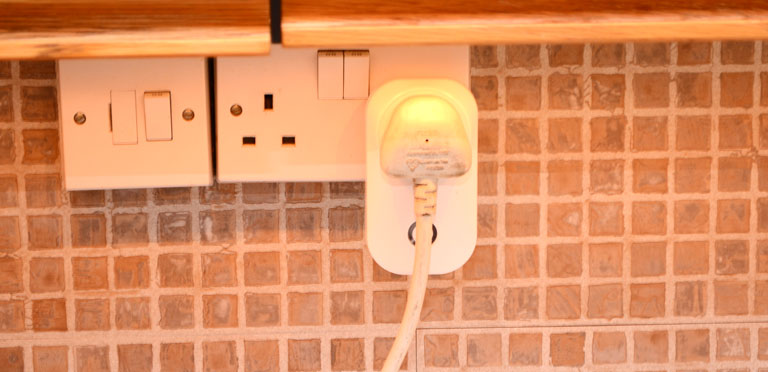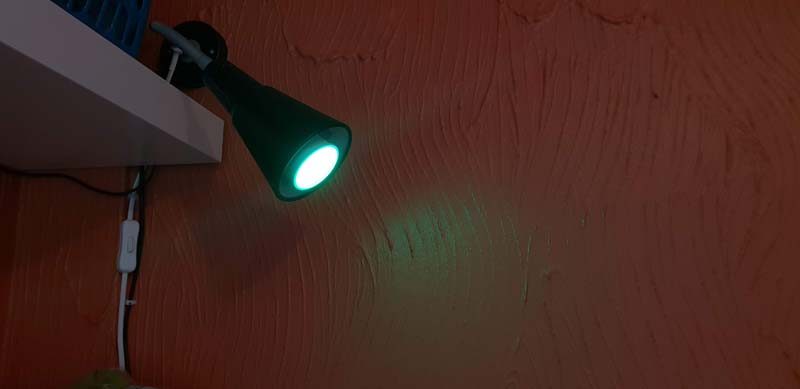Creating an electriQ Equipped Smart Home for Around £150
Peter Donnell / 7 years ago
Installation and Performance
Installing the smart plugs couldn’t be easier than it is. You simply plug it into a socket, and then plug your device such as a kettle, lamp, fan, TV, etc, into the block.

The mobile app is really easy to follow and gives clear advice step by step. What’s awesome is that its all-in-one for a huge range of electriQ products. Unfortunately, not the camera, but that does have its own easy to use app also.

Once it finds your device and you pair your WiFi with it, it’ll likely update. Best to do this straight away, as many updates could be security and stability related.

Alexa, Turn on the Lamp!
Now that’s done, my phone is the remote control for the plug. I can still use it manually, or I can now turn it off or on from anywhere in the world. I don’t need to turn my kettle on from Taiwan, but it’s fun to do from the couch. Of course, there are more practical applications than that, but it’s a fun experiment.

In the setup process, you can add a home name, location and more, allowing you to manage multiple locations. Furthermore, you can apply multiple product categories to multiple rooms.

This means you can add lots of lights, switches and other electriQ products to each room, allowing for easier control overall. You can rename everything too, so don’t worry if the defaults don’t match. These names will be tied up into Amazon/Google too. Of course, saying “Alexa, turn off living room” or “front light, back light, lamp, fan, TV” you get the idea, all work if you name them right too.

The lighting control is awesome. It’s a simple touch interface to pick colours, and a separate one for white ambience too. Of course, you can set scenes for multiple lights, with a fair few presets, shut off timers and more. Overall, it’s got all the same core features as Philips Hue, so again a big win for electriQ. The interface is the same for GU10, B22 and other lights in their range.

Lights!
For a “cheaper” bulb, and again I use that term in a positive way, the brightness is pretty fantastic. The colours look much better in real life and far less blown out, but hey, you try to take a picture of a lightbulb! The brightness is strong on the white mode, more than enough for reading and working. Of course, you can dim it down to as low as 1% if you want to only entertain moths with supervision.

With a full RGB colour wheel, you can get pretty darn funky with the choices too.

Psychedelic
You can set each bulb in the room to its own brightness and colour too, so you can get pretty psychedelic very quickly too.

The GU10 is great for recessed and spot fixtures. We can a small fitting above our cooker, and the GU10 are very directional, making them perfect for the job. For lighting larger areas, they’re not ideal, unless you have lots of GU10 fittings of course.

It’s pretty bright too, maybe a little less so than a Hue one, but it’s certainly more than bright enough compared to most standard LED bulbs.

Not that my kitchen calls for it, but you can get the colours going here too. If you have a fancy GU10 fitting with angled spots, you could get quite the disco lighting effect going. For parties and general ambience, this is a lot of fun to play around with.


Setting up the camera is much the same, but again with its own app. Just pair the device and you’re good to go. While you can view the live feed, there are some basic options to save clips and images, as well as a two-way intercom feature. I’ll be honest, it’s nothing fancy, but it does get the job done. I put it in the hall and was able to move the camera around remotely, listen in, and that’s about it really. For checking in on your home it’s great, but don’t expect any advanced security features here.




















